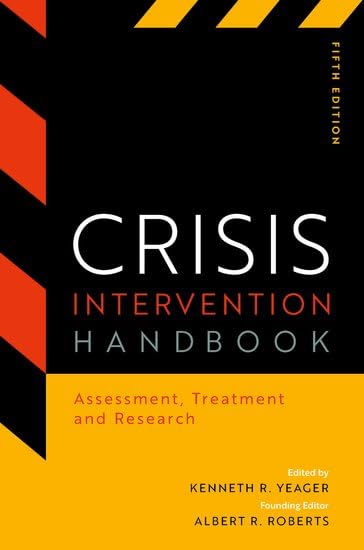Περιγραφή
This book is essential to those working in healthcare, mental health, and as first responders. First published in 1990, this fifth edition of the classic and widely acclaimed text provides a comprehensive, up-to-date resource for individuals, organizations, and communities wishing to develop competencies in crisis management and intervention. Kenneth Yeager has again masterfully updated earlier editions, edited by the late Albert Roberts, while keeping as core content Roberts’ seven-stage model. It is the only reference book using evidence-based approaches to crisis intervention.
This work provides hands on techniques and interventions to be applied in a variety of areas and presents clearly outlined and concise processes covering the widest range of crisis events. This is the one indispensable book for students and practitioners alike. Covering current pressing topics with a variety of examples of how to apply Roberts’ seven stage model, The Crisis Intervention Handbook addresses the most demanding and consequential issues faced in crisis intervention. The book provides a hands on approach designed to address a full range of acute crisis episodes, including school violence, battering, adult substance use disorder, school violence response to crisis in healthcare, and mass disasters, such as terrorist attacks. It additionally, walks the reader through outcome assessment and scale development.
- Provides evidence-based approaches, practice guidelines, and step-by-step crisis intervention approaches for multiple areas of crisis
- Addresses the issues of school violence, substance use disorders, loss grief, and suicide prevention and postvention
- Expands the classic tool for teaching crisis intervention
Περιεχόμενα
Chapter 1: Bridging the Past and Present to the Future of Crisis Intervention and Crisis Management
Chapter 2: Lethality Assessment and Crisis Intervention With Persons Presenting With Suicidal Ideation
Chapter 3: Differentiating Among Stress, Acute Stress Disorder, Acute Crisis Episodes, Trauma, and PTSD: Paradigm and Treatment Goals
Chapter 4: Crisis Intervention for Persons Diagnosed With Clinical Disorders Based on the Stress-Crisis Continuum
Chapter 5: Suicide Crisis Intervention
Chapter 6: The ACT Model: Assessment, Crisis Intervention, and Trauma Treatment in the Aftermath of Community Disasters
Chapter 7: An Examination of the US Response to Bioterrorism: Confronting Trauma and Managing the Threat and Aftermath Through Crisis Intervention
Chapter 8: Crisis Intervention and First Responders: Impact of Long-Term Exposure to Traumatic Events
Chapter 9: Crisis Intervention Teams: Community Partnerships Supporting Police-Based First Response for People in Mental Health Crisis
Chapter 10: Child and Adolescent Psychiatric Emergencies: Mobile Crisis Response
Chapter 11: Crisis Intervention With Early Adolescents Who Have Suffered a Significant Loss
Chapter 12: A Comprehensive Model for Crisis Intervention With Survivors of Intimate Partner Violence (IPV) and Their Children
Chapter 13: Crisis Intervention With Stalking Victims
Chapter 14: Crisis Intervention with Persons Affected by Gambling Disorder Using Motivational Interviewing
Chapter 15: Crisis Intervention Application of Brief Solution-Focused Therapy in Addictions
Chapter 16: Crisis Intervention for Women with Chronic Health Issues
Chapter 17: Animal-Assisted Crisis Response
Chapter 18: Trauma Support Services for Healthcare Workers: The Stress, Trauma and Resilience (STAR) Program
Chapter 19: Effective Crisis Intervention With Care Givers
Chapter 20: Effective Crisis Intervention: Knowledge, Skills and Models
Chapter 21: The Crisis State Assessment Scale: Development and Psychometrics
Chapter 22: Designs and Procedures for Evaluating Crisis Intervention and Trauma-Informed Care











